About every seven years, BART commissions a survey of its stations to learn more about who is riding and where he/she is going. BART’s last survey was done in 2008, prior to the Great Recession and the tech boom. Preliminary results are out for the 2015 survey, and they include some interesting findings:
1. 45 percent of BART ridership comes from San Francisco, Oakland, and Berkeley
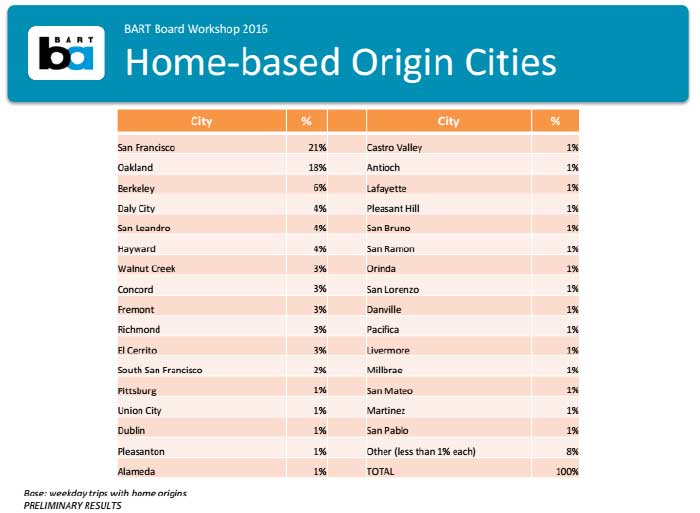
2. Walking, biking, and drop-offs are increasing, while park-and-ride and bus transfers have fallen significantly
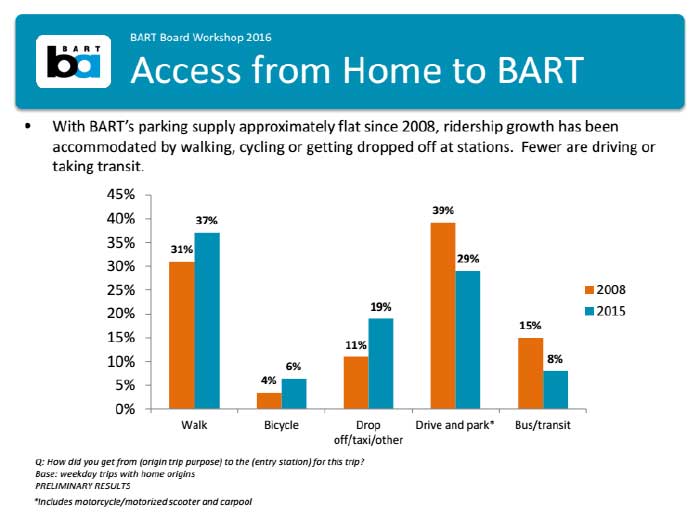
3. 10-15 percent of passengers at many Oakland and Berkeley stations bicycle to BART
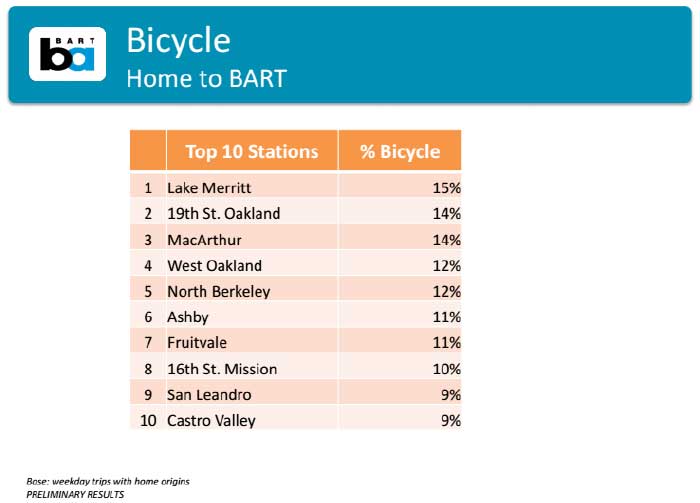
4. Transit access at East Bay stations has fallen significantly due to service cuts
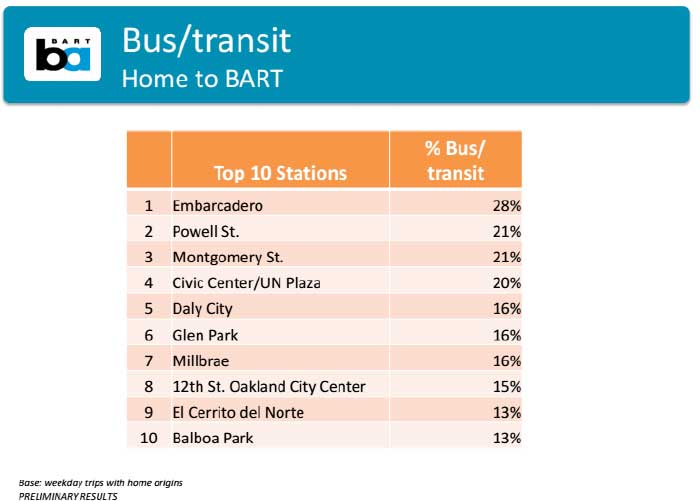
5. Most riders at 24th & Mission live within four blocks of the station…
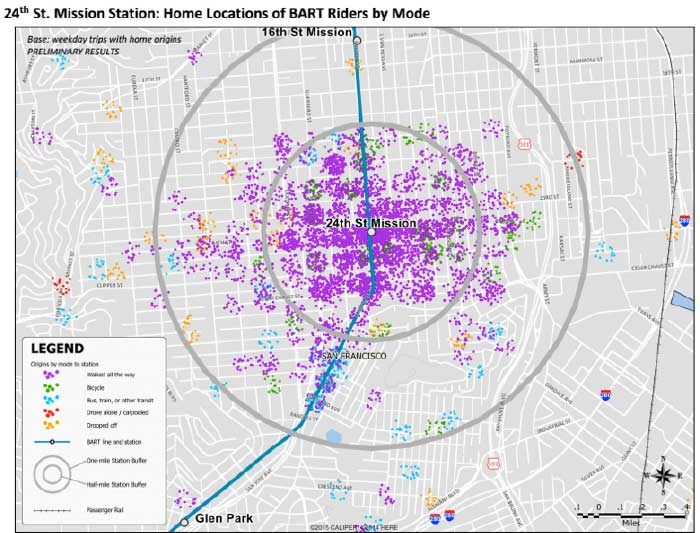
6. …While people drive as far as Brentwood to board at Pittsburgh-Bay Point Station
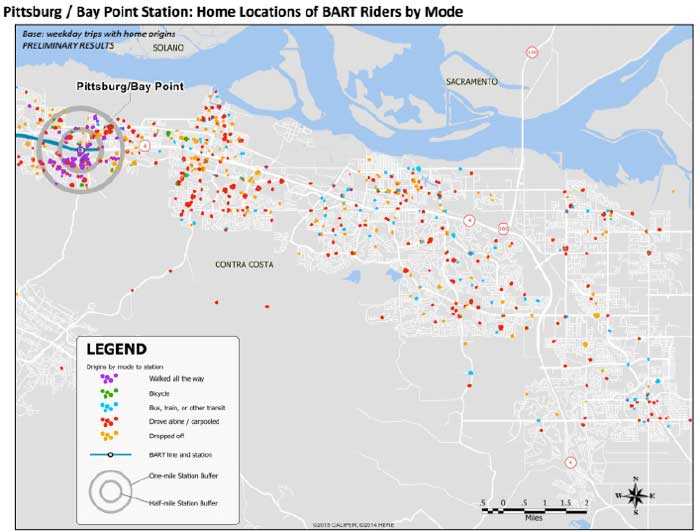
7. BART’s ridership is diverse, but mostly white
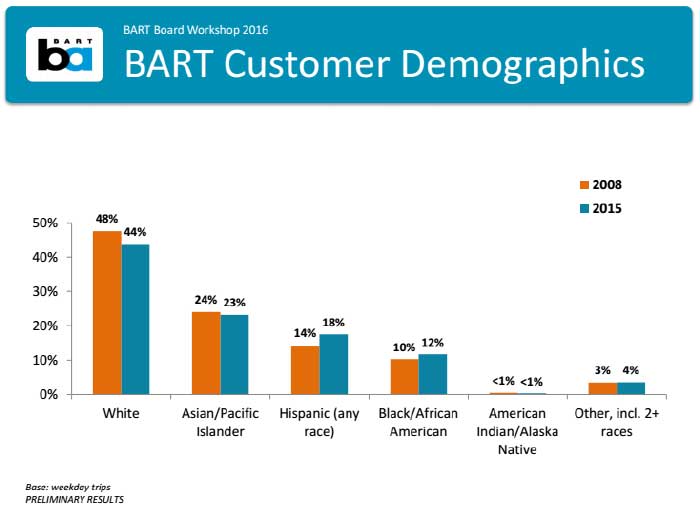
It’s clear that BART has changed significantly over the past seven years as it has continued to grow out of its commuter park-and-ride origins into a backbone mode for car-free and car-light households who instead rely on walking, biking, and transit – particularly in the urban core of San Francisco, Oakland, and Berkeley. However, BART’s high fares and lack of seamless transfers to other transit services remain key barriers to realizing its full potential as a diverse and equitable transit system: the agency has continued to subsidize the construction of new parking garages at stations like MacArthur and West Dublin/Pleasanton without providing discounts for bus transfers or a monthly pass.
Of course, BART will continue to change dramatically over the next seven years. Ridership growth is expected to continue as BART extensions to Antioch and San Jose near completion, more transit-oriented development is built around its stations, and service and capacity expansions occur.

